�
Rigid Body Dynamics
Algorithms
Roy Featherstone
Rigid Body Dynamics
Algorithms
�
Roy Featherstone
The Austrailian National University
Canberra, ACT
Austrailia
ISBN 978-1-4899-7560-7 (eBook)
Library of Congress Control Number: 2007936980
ISBN 978-0-387-74314-1
Printed on acid-free paper.
¤ 2008 Springer Science+Business Media, LLC
All rights reserved. This work may not be translated or copied in whole or in part without
the written permission of the publisher (Springer Science+Business Media, LLC, 233 Spring
Street, New York, NY 10013, USA), except for brief excerpts in connection with reviews or
scholarly analysis. Use in connection with any form of information storage and retrieval,
electronic adaptation, computer software, or by similar or dissimilar methodology now
known or hereafter developed is forbidden. The use in this publication of trade names,
trademarks, service marks and similar terms, even if they are not identified as such, is not to
be taken as an expression of opinion as to whether or not they are subject to proprietary
rights.
9 8 7 6 5 4 3 2 1
springer.com
�
Preface
The purpose of this book is to present a substantial collection of the most
efficient algorithms for calculating rigid-body dynamics, and to explain them
in enough detail that the reader can understand how they work, and how to
adapt them (or create new algorithms) to suit the reader’s needs. The collection
includes the following well-known algorithms: the recursive Newton-Euler algo-
rithm, the composite-rigid-body algorithm and the articulated-body algorithm.
It also includes algorithms for kinematic loops and floating bases. Each algo-
rithm is derived from first principles, and is presented both as a set of equations
and as a pseudocode program, the latter being designed for easy translation into
any suitable programming language.
This book also explains some of the mathematical techniques used to for-
mulate the equations of motion for a rigid-body system. In particular, it shows
how to express dynamics using six-dimensional (6D) vectors, and it explains the
recursive formulations that are the basis of the most efficient algorithms. Other
topics include: how to construct a computer model of a rigid-body system; ex-
ploiting sparsity in the inertia matrix; the concept of articulated-body inertia;
the sources of rounding error in dynamics calculations; and the dynamics of
physical contact and impact between rigid bodies.
Rigid-body dynamics has a tendency to become a sea of algebra. However,
this is largely the result of using 3D vectors, and it can be remedied by using a
6D vector notation instead. This book uses a notation based on spatial vectors,
in which the linear and angular aspects of rigid-body motion are combined into
a unified set of quantities and equations. The result is typically a four- to six-
fold reduction in the volume of algebra. The benefit is also felt in the computer
code: shorter, clearer programs that are easier to read, write and debug, but
are still just as efficient as code using standard 3D vectors.
This book is intended to be accessible to a wide audience, ranging from
senior undergraduates to researchers and professionals. Readers are assumed
to have some prior knowledge of rigid-body dynamics, such as might be obtained
from an introductory course on dynamics, or from reading the first few chapters
of an introductory text. However, no prior knowledge of 6D vectors is required,
as this topic is explained from the beginning in Chapter 2. This book does
also contain some advanced material, such as might be of interest to dynamics
�
vi
PREFACE
experts and scholars of 6D vectors. No software is distributed with this book,
but readers can obtain source code for most of the algorithms described here
from the author’s web site.
This text was originally intended to be a second edition of a book entitled
Robot Dynamics Algorithms, which was published back in 1987; but it quickly
became clear that there was enough new material to justify the writing of a
whole new book. Compared with its predecessor, the most notable new mate-
rials to be found here are: explicit pseudocode descriptions of the algorithms;
a chapter on how to model rigid-body systems; algorithms to exploit branch-
induced sparsity; an enlarged treatment of kinematic loops and floating-base
systems; planar vectors (the planar equivalent of spatial vectors); numerical
errors and model sensitivity; and guidance on how to implement spatial-vector
arithmetic.
�
Contents
Preface
1 Introduction
. . . . . . . . . . . . . . . . . . . . . . . .
1.1 Dynamics Algorithms
1.2 Spatial Vectors . . . . . . . . . . . . . . . . . . . . . . . . . . . .
1.3 Units and Notation . . . . . . . . . . . . . . . . . . . . . . . . . .
1.4 Readers’ Guide . . . . . . . . . . . . . . . . . . . . . . . . . . . .
1.5 Further Reading . . . . . . . . . . . . . . . . . . . . . . . . . . .
v
1
1
3
4
5
6
2 Spatial Vector Algebra
7
2.1 Mathematical Preliminaries . . . . . . . . . . . . . . . . . . . . .
7
2.2 Spatial Velocity . . . . . . . . . . . . . . . . . . . . . . . . . . . . 10
2.3 Spatial Force . . . . . . . . . . . . . . . . . . . . . . . . . . . . . 13
2.4 Pl¨ucker Notation . . . . . . . . . . . . . . . . . . . . . . . . . . . 15
2.5 Line Vectors and Free Vectors . . . . . . . . . . . . . . . . . . . . 16
2.6 Scalar Product
. . . . . . . . . . . . . . . . . . . . . . . . . . . . 17
2.7 Using Spatial Vectors
. . . . . . . . . . . . . . . . . . . . . . . . 18
2.8 Coordinate Transforms . . . . . . . . . . . . . . . . . . . . . . . . 20
2.9 Spatial Cross Products . . . . . . . . . . . . . . . . . . . . . . . . 23
2.10 Differentiation . . . . . . . . . . . . . . . . . . . . . . . . . . . . 25
2.11 Acceleration . . . . . . . . . . . . . . . . . . . . . . . . . . . . . . 28
2.12 Momentum . . . . . . . . . . . . . . . . . . . . . . . . . . . . . . 31
2.13 Inertia . . . . . . . . . . . . . . . . . . . . . . . . . . . . . . . . . 32
2.14 Equation of Motion . . . . . . . . . . . . . . . . . . . . . . . . . . 35
2.15 Inverse Inertia
. . . . . . . . . . . . . . . . . . . . . . . . . . . . 36
2.16 Planar Vectors
. . . . . . . . . . . . . . . . . . . . . . . . . . . . 37
2.17 Further Reading . . . . . . . . . . . . . . . . . . . . . . . . . . . 38
3 Dynamics of Rigid Body Systems
39
3.1 Equations of Motion . . . . . . . . . . . . . . . . . . . . . . . . . 40
3.2 Constructing Equations of Motion . . . . . . . . . . . . . . . . . 42
3.3 Vector Subspaces . . . . . . . . . . . . . . . . . . . . . . . . . . . 46
3.4 Classification of Constraints . . . . . . . . . . . . . . . . . . . . . 50
vii
�
viii
CONTENTS
3.5 Joint Constraints . . . . . . . . . . . . . . . . . . . . . . . . . . . 53
3.6 Dynamics of a Constrained Rigid Body . . . . . . . . . . . . . . 57
3.7 Dynamics of a Multibody System . . . . . . . . . . . . . . . . . . 60
4 Modelling Rigid Body Systems
65
4.1 Connectivity . . . . . . . . . . . . . . . . . . . . . . . . . . . . . 66
4.2 Geometry . . . . . . . . . . . . . . . . . . . . . . . . . . . . . . . 73
4.3 Denavit-Hartenberg Parameters . . . . . . . . . . . . . . . . . . . 75
4.4 Joint Models
. . . . . . . . . . . . . . . . . . . . . . . . . . . . . 78
4.5 Spherical Motion . . . . . . . . . . . . . . . . . . . . . . . . . . . 84
4.6 A Complete System Model
. . . . . . . . . . . . . . . . . . . . . 87
5 Inverse Dynamics
89
5.1 Algorithm Complexity . . . . . . . . . . . . . . . . . . . . . . . . 89
5.2 Recurrence Relations . . . . . . . . . . . . . . . . . . . . . . . . . 90
5.3 The Recursive Newton-Euler Algorithm . . . . . . . . . . . . . . 92
5.4 The Original Version . . . . . . . . . . . . . . . . . . . . . . . . . 97
5.5 Additional Notes . . . . . . . . . . . . . . . . . . . . . . . . . . . 99
6 Forward Dynamics — Inertia Matrix Methods
101
6.1 The Joint-Space Inertia Matrix . . . . . . . . . . . . . . . . . . . 102
6.2 The Composite-Rigid-Body Algorithm . . . . . . . . . . . . . . . 104
6.3 A Physical Interpretation . . . . . . . . . . . . . . . . . . . . . . 108
6.4 Branch-Induced Sparsity . . . . . . . . . . . . . . . . . . . . . . . 110
6.5 Sparse Factorization Algorithms
. . . . . . . . . . . . . . . . . . 112
6.6 Additional Notes . . . . . . . . . . . . . . . . . . . . . . . . . . . 117
7 Forward Dynamics — Propagation Methods
119
7.1 Articulated-Body Inertia . . . . . . . . . . . . . . . . . . . . . . . 119
7.2 Calculating Articulated-Body Inertias
. . . . . . . . . . . . . . . 123
7.3 The Articulated-Body Algorithm . . . . . . . . . . . . . . . . . . 128
7.4 Alternative Assembly Formulae . . . . . . . . . . . . . . . . . . . 131
7.5 Multiple Handles . . . . . . . . . . . . . . . . . . . . . . . . . . . 136
8 Closed Loop Systems
141
8.1 Equations of Motion . . . . . . . . . . . . . . . . . . . . . . . . . 141
8.2 Loop Constraint Equations
. . . . . . . . . . . . . . . . . . . . . 143
8.3 Constraint Stabilization . . . . . . . . . . . . . . . . . . . . . . . 145
8.4 Loop Joint Forces . . . . . . . . . . . . . . . . . . . . . . . . . . . 148
8.5 Solving the Equations of Motion . . . . . . . . . . . . . . . . . . 149
8.6 Algorithm for C − τ a
. . . . . . . . . . . . . . . . . . . . . . . . 152
8.7 Algorithm for K and k . . . . . . . . . . . . . . . . . . . . . . . 154
8.8 Algorithm for G and g . . . . . . . . . . . . . . . . . . . . . . . . 156
8.9 Exploiting Sparsity in K and G . . . . . . . . . . . . . . . . . . 158
8.10 Some Properties of Closed-Loop Systems . . . . . . . . . . . . . . 159
�
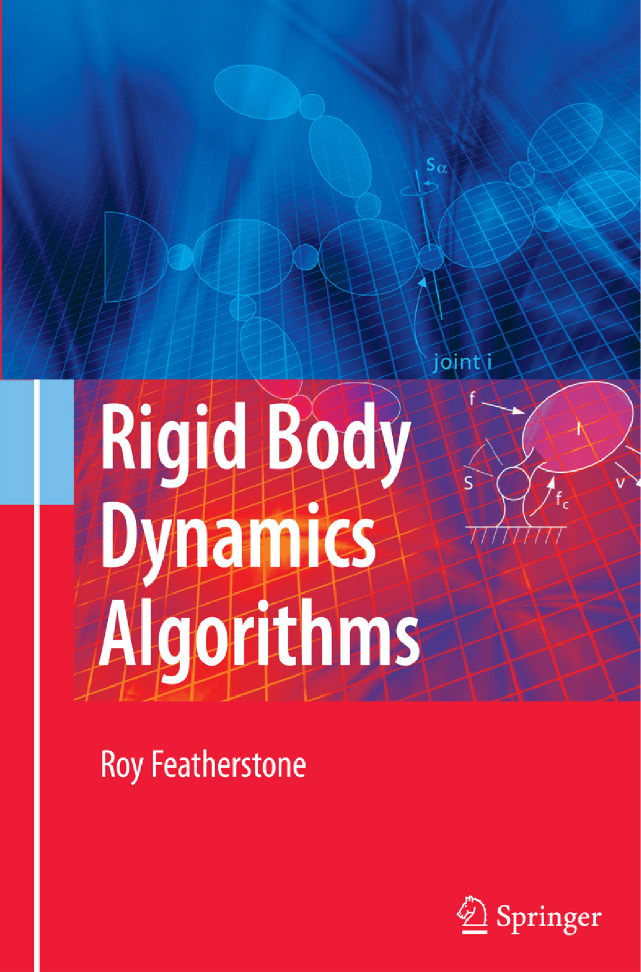
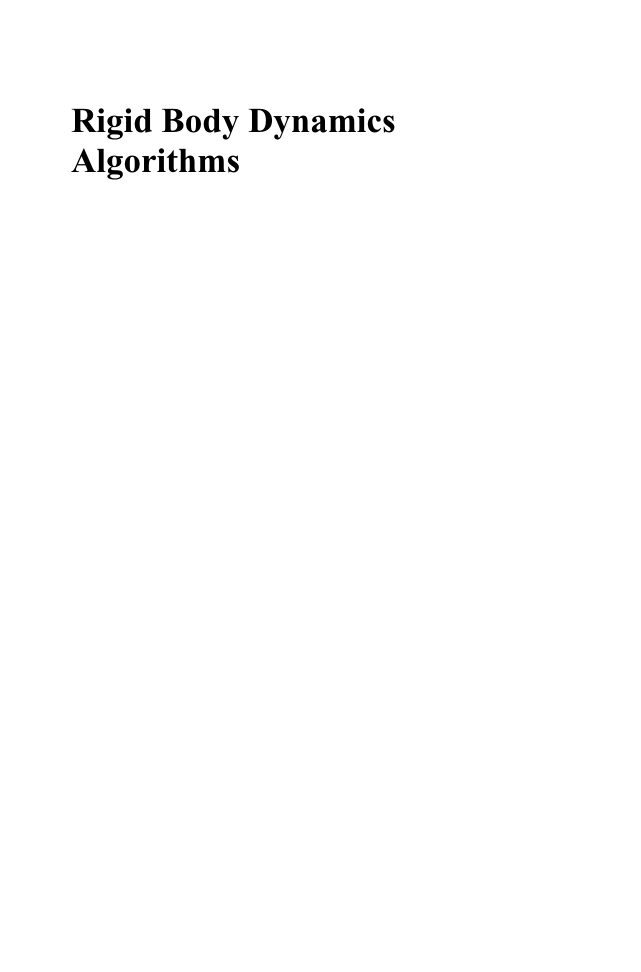
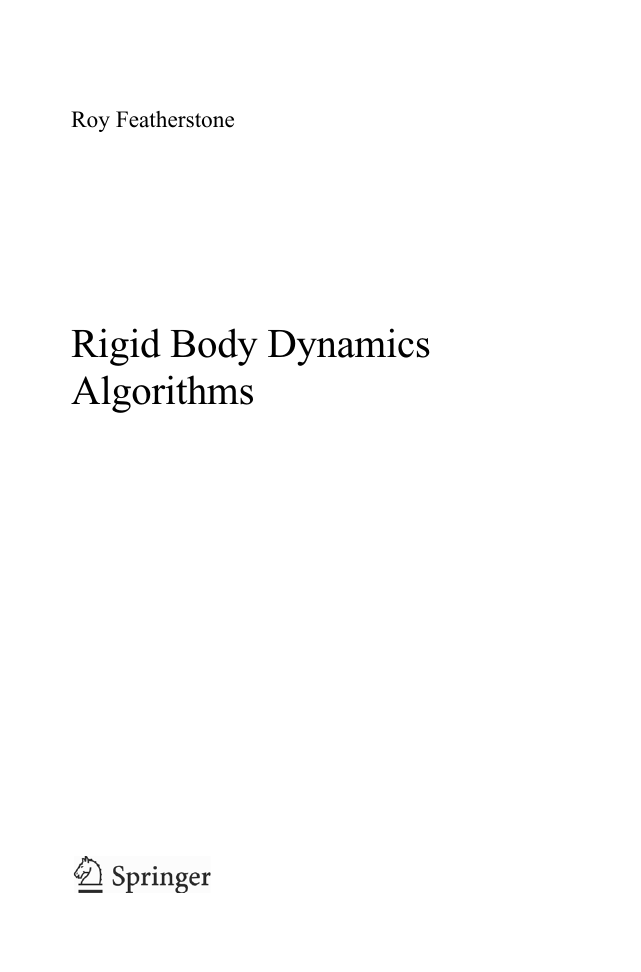

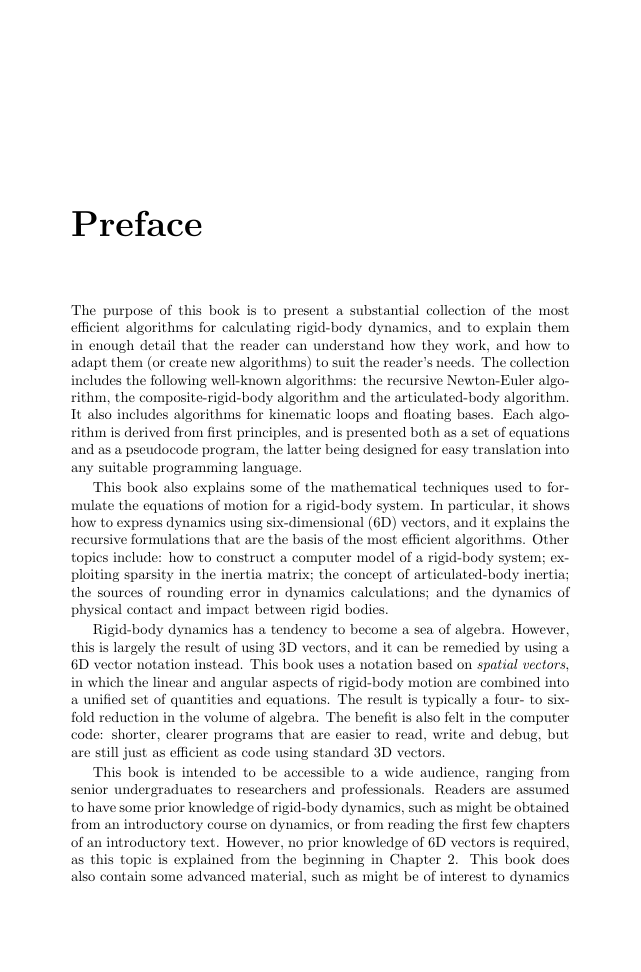
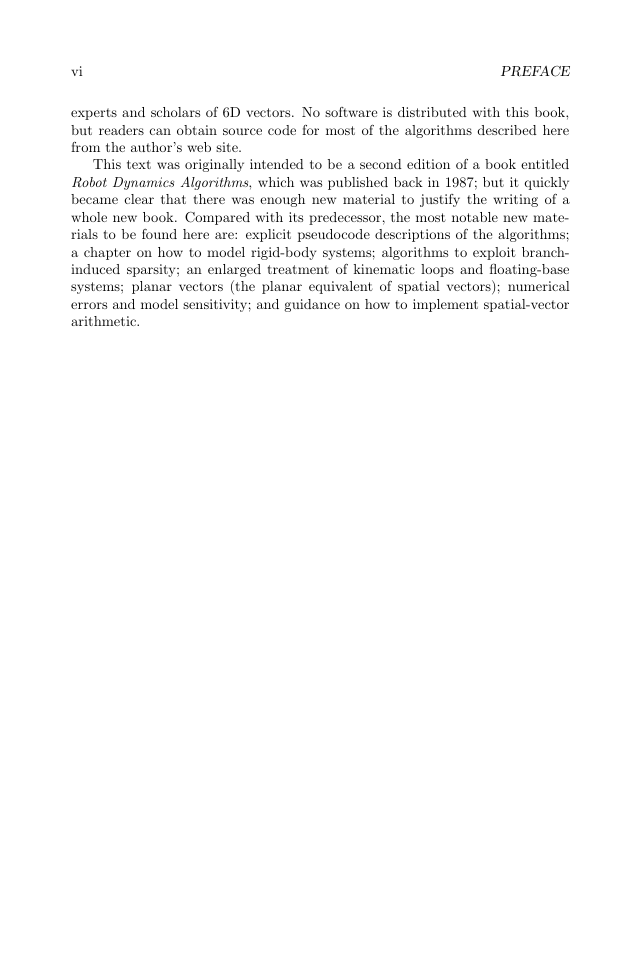
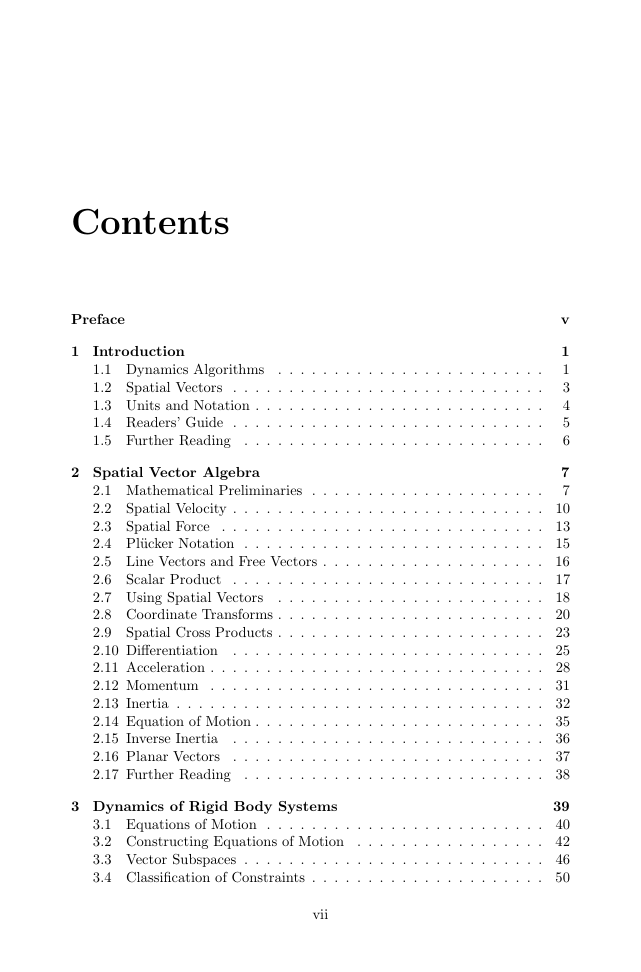
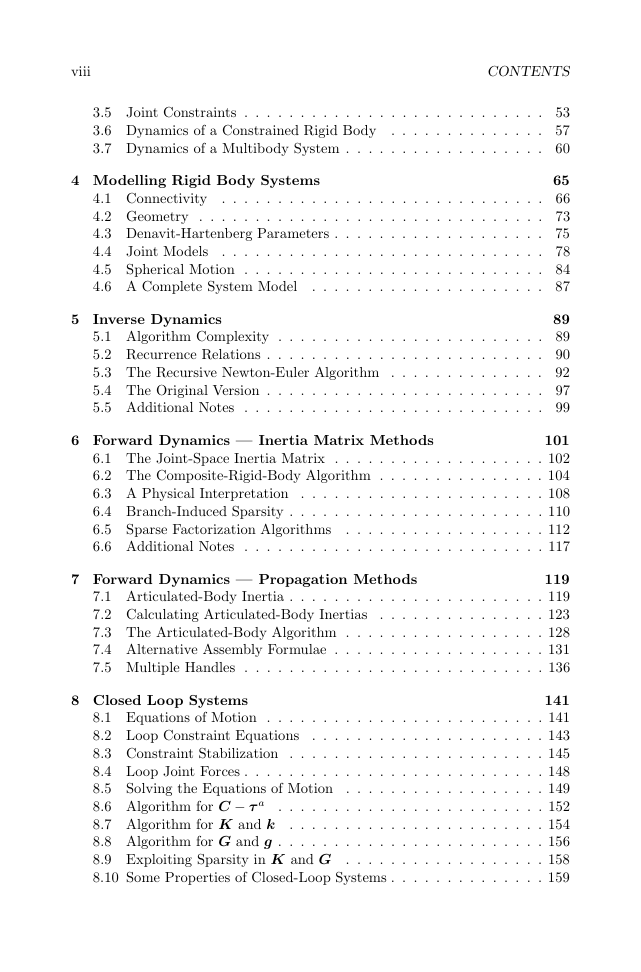








 2023年江西萍乡中考道德与法治真题及答案.doc
2023年江西萍乡中考道德与法治真题及答案.doc 2012年重庆南川中考生物真题及答案.doc
2012年重庆南川中考生物真题及答案.doc 2013年江西师范大学地理学综合及文艺理论基础考研真题.doc
2013年江西师范大学地理学综合及文艺理论基础考研真题.doc 2020年四川甘孜小升初语文真题及答案I卷.doc
2020年四川甘孜小升初语文真题及答案I卷.doc 2020年注册岩土工程师专业基础考试真题及答案.doc
2020年注册岩土工程师专业基础考试真题及答案.doc 2023-2024学年福建省厦门市九年级上学期数学月考试题及答案.doc
2023-2024学年福建省厦门市九年级上学期数学月考试题及答案.doc 2021-2022学年辽宁省沈阳市大东区九年级上学期语文期末试题及答案.doc
2021-2022学年辽宁省沈阳市大东区九年级上学期语文期末试题及答案.doc 2022-2023学年北京东城区初三第一学期物理期末试卷及答案.doc
2022-2023学年北京东城区初三第一学期物理期末试卷及答案.doc 2018上半年江西教师资格初中地理学科知识与教学能力真题及答案.doc
2018上半年江西教师资格初中地理学科知识与教学能力真题及答案.doc 2012年河北国家公务员申论考试真题及答案-省级.doc
2012年河北国家公务员申论考试真题及答案-省级.doc 2020-2021学年江苏省扬州市江都区邵樊片九年级上学期数学第一次质量检测试题及答案.doc
2020-2021学年江苏省扬州市江都区邵樊片九年级上学期数学第一次质量检测试题及答案.doc 2022下半年黑龙江教师资格证中学综合素质真题及答案.doc
2022下半年黑龙江教师资格证中学综合素质真题及答案.doc